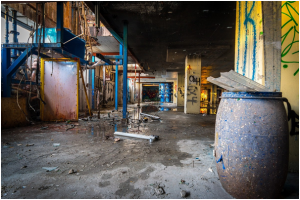Manufacturing has taken more than its share of flak from the Green Lobby; however, the truth is that manufacturers were striving for waste-free efficiency and recycling long before everyone else.

Recycling must make material sense; otherwise, you are just exchanging one kind of waste for another. Change is not driven by ‘environmental consciousness’ but by real opportunities to run cleaner and recycle.
Real opportunities take three forms: better technology; government support for the development of better technology; and improved efficiency of production processes, backed by new technology such as computing, sensors and automation.
Time and motion
Huge effort has gone into optimising office processes, but surprisingly little into optimising physical effort in factory settings. If a test bay is far from the door and raised from the floor, the amount of time, labour, accidental damage and injury in moving items to and fro adds up. Who are the best people to make time and motion suggestions? Your workforce!
Waiting
Non-motion is also wasteful and results from processes that are not well integrated. Get operations flowing continuously by choosing reliable control equipment; for example, a ductwork blast gate damper helps to balance production flow and minimise the build-up of waste or pollutants. They can be linked to control panels or computers and are available from suppliers such as www.dustspares.co.uk.

Transportation
In recent history, the overheads of transporting goods half way around the world have been surprisingly small; however, higher fuel costs could change this. Locating factories nearer workers and markets makes sense.
Storage
Most unsold commodities are perishable. Even if they store well, they lock up space and assets, consume packaging, and require transportation. Production lines that can respond to fluctuating costs and demand are an advantage; just-in-time manufacturing is more efficient than just-in-case.
Overproduction
In earlier times, economy of scale often required machinery that was hard to slow down or turn off, such as iron furnaces. Closed shops often made it hard to reassign staff. A common result was poor quality production and markets depressed by excess supply.
Modern machinery can be leaner and run smaller batches, such as 3D printers. Automation also offers greater flexibility and control.
Quality
The costs of faulty products are many: service calls, replacement, reputation and compensation to name a few. Get it right first time by making every production process someone’s explicit responsibility.
